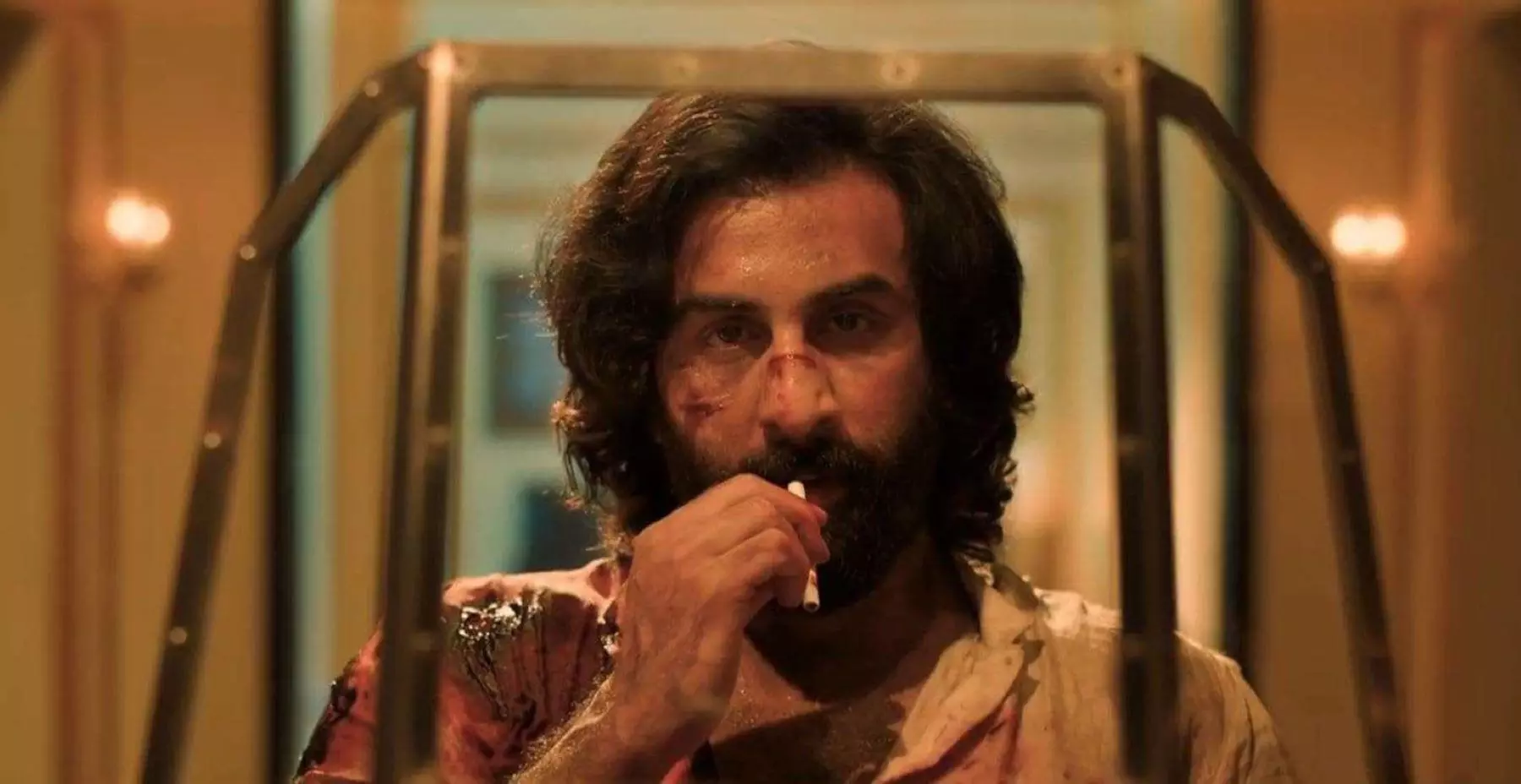How Passing Ranbir Kapoor And Bobby Deol’s ‘A’ Rated ‘Animal’ Led To CBFC CEO Firing; Why Is Indian Cinema Obsessed With Toxic Masculinity?
In cinema, where stories are woven into the fabric of society, a powerful force shapes our collective consciousness—Indian films. However, within the frames of this visual narrative, a troubling phantom looms large - the persistent portrayal of toxic masculinity. As celluloid heroes persistently perpetuate regressive stereotypes, glorify harassment, and undermine consent, they unknowingly become architects of societal erosion. This cinematic rendition of toxic masculinity not only corrodes the delicate threads of our social fabric but also, in the context of an already patriarchal society, fuels a disconcerting cycle of violence, ultimately threatening the very foundation of equality and respect. Hence, the CBFC CEO firing is perhaps the right step in this direction.

According to recent reports, the termination of CBFC CEO Ravinder Bhaker has been linked to the controversial film “Animal,” featuring Ranbir Kapoor and Bobby Deol.
Smita Vats Sharma, the Additional Director General of the Press Information Bureau, has taken temporary charge of the censor board.
Insiders revealed that the certification process for “Animal” caused a significant outcry within and outside CBFC due to the film’s contentious and misogynistic content.
The source explained, “Questions are being raised about how a film so entrenched in violence and abuse, and unabashedly misogynistic, could be granted a censor certificate. ‘Animal’ violates numerous censorship guidelines and the issuance of an ‘A’ certificate without cutting objectionable scenes has ignited controversy within the nation and the I&B ministry.”
Also, the source hinted that Bhaker’s removal is just the beginning, suggesting that more changes may follow. If this is accurate, Sandeep Reddy Vanga, the director of “Animal,” might face challenges in creating a sequel, titled “Animal Park,” with a similar unfiltered content approach.
This incident echoes a previous allegation by Tamil actor Vishal, who accused the CBFC of corruption. Vishal claimed to have paid a bribe of Rs 6.5 lakh to expedite the certification process for his film “Mark Antony.”
The controversy surrounding “Animal” has intensified post-release, with criticisms directed at its violent, abusive, and misogynistic content. Many individuals have accused the filmmakers of glorifying toxic masculinity in the movie.

Questioning Toxic Masculinity
Toxic masculinity is not merely a term; it is a corrosive force that permeates the very fabric of our society, insidiously influencing attitudes and behaviors, particularly towards women.
It is a distorted and harmful concept of manhood that imposes rigid and harmful stereotypes on men, pressuring them to conform to an idealized, aggressive, and dominant masculinity.
This toxic narrative thrives on the suppression of vulnerability, emotional expression, and empathy, creating a breeding ground for hostility and violence.
In its most insidious form, toxic masculinity manifests in the dehumanization of women; it fosters a culture where women are objectified, demeaned, and reduced to mere accessories to fulfill the whims of a distorted masculinity.
The dehumanization is not confined to the realms of rhetoric; it translates into real-world consequences, manifesting in violence against women and the impact is felt in the chilling statistics of domestic violence, sexual assault, and harassment.
Toxic masculinity not only normalizes such abhorrent behavior but perpetuates a culture of silence and complicity. It erects barriers that prevent survivors from coming forward, fostering an environment where accountability is elusive and justice is often denied.

Promoting Misogyny
The link between toxic masculinity and violence against women is not incidental; it is causal.
When men are conditioned to equate power with dominance, and when their worth is measured by the subjugation of others, it becomes a volatile cocktail that explodes into acts of brutality.
Women bear the brunt of this toxic masculinity, facing physical, emotional, and psychological harm as a consequence of a society that upholds and perpetuates these damaging norms.
Indian Films Are Highly Toxic
In the vast cinematic of India, films often serve as both a mirror reflecting societal norms and a powerful influencer shaping perceptions.
Unfortunately, the portrayal of toxic masculinity in Indian cinema has been a recurring and concerning theme -from the normalization of eve-teasing to the perpetuation of misogyny, many films have contributed to a culture that normalizes and, at times, glamorizes harmful behaviors.
1. Eve-Teasing as “Romance”
Indian cinema has, on numerous occasions, romanticized and trivialized eve-teasing, portraying it as a misguided form of courtship rather than the aggressive and unwarranted harassment that it is.
The hero persistently pursuing the heroine despite her discomfort and finally succumbing has been a common trope, sending a troubling message that persistence in the face of resistance is not only acceptable but also commendable.
2. Objectification of Women
Many films have perpetuated the objectification of women, reducing them to mere props in the narrative rather than fully fleshed-out characters.
The item numbers, often featuring scantily clad women dancing provocatively, contribute to a culture where women are viewed primarily through the lens of male desire.
This not only reinforces harmful stereotypes but also fosters an environment where women are judged based on their physical appearance rather than their abilities or character.
Sadly, it seems that many women are falling and following this trap to gain popularity, whether it be on social media or otherwise.
3. Misogynistic Dialogues and Storylines
Certain dialogues and storylines in Indian films have openly propagated misogynistic attitudes.
Verbal abuse, derogatory remarks, and the portrayal of women as submissive entities contribute to the reinforcement of regressive gender norms.
These representations not only normalize disrespectful behavior but also contribute to the societal acceptance of a power dynamic that is detrimental to gender equality.

4. Stalking as a Form of Love
The persistent portrayal of stalking as a romantic gesture in Indian films sends a dangerous message about the boundaries of consent.
Stalking, when depicted as a means to win over a love interest, blurs the lines between persistence and harassment, further entrenching the notion that relentless pursuit is a legitimate expression of affection.
It is crucial to recognize that the impact of these cinematic portrayals extends beyond the realm of entertainment. They contribute to a broader cultural narrative that shapes societal attitudes and behaviors.
The consequence is a society where toxic masculinity is not only tolerated but, in some instances, celebrated.
4. Normalizing Aggressive Behavior
Cinematic narratives that glorify stalking, harassment, and eve-teasing contribute to the normalization of aggressive behavior, blurring the lines between consent and violation.
Women in this country and worldwide are subject to the horrifying reality of violence – physical, verbal, emotional and mental, it’s time we put a stop to it.
5. Reinforcing Power Imbalances
Toxic masculinity, as perpetuated in films, often reinforces traditional power dynamics and gender roles.
The portrayal of women as submissive and objectified entities reinforces the notion that they exist to fulfill the desires of men.
This power imbalance not only limits women’s agency but also contributes to an environment where violence against them is seen as a means of asserting dominance.

6. Contributing to Rape Culture
The objectification of women and the trivialization of consent in cinematic narratives contribute to a broader rape culture – by perpetuating stereotypes that undermine the autonomy and dignity of women, these films inadvertently contribute to a society where sexual violence is not condemned as vehemently as it should be.
This, in turn, creates an environment where perpetrators may feel emboldened and survivors are hesitant to come forward; every day, they are cases being reported of rapes from across the country, and even minors fall prey to the sexual exploits of these ‘animals’.
7. Impact on Societal Attitudes And Young Impressionable Minds
Cinema, as a powerful medium, plays a significant role in shaping societal attitudes; when toxic masculinity is repeatedly depicted as heroic or aspirational, it influences real-world behaviours and attitudes.
Young minds, in particular, internalize these narratives, contributing to the perpetuation of harmful gender norms and reinforcing a cycle of violence.
6. Undermining Progress Towards Equality
In a society already grappling with patriarchal structures, the portrayal of toxic masculinity in films undermines efforts towards gender equality.
It reinforces regressive attitudes, making it challenging to break free from deeply ingrained societal norms that perpetuate discrimination and violence against women.

The Viewpoint
To address this erosion of the social fabric, it is essential for filmmakers, audiences, and societal stakeholders to engage in critical conversations about the impact of on-screen representations.
We need to demand narratives that challenge toxic masculinity, depict respectful relationships, and champion gender equality, there is an opportunity to reshape societal attitudes and foster a culture that rejects violence and embraces inclusivity.
It is our collective responsibility to dismantle the harmful narratives that contribute to the degradation of the social fabric, working towards a society where respect, equality, and safety are paramount.
As we scrutinize the impact of toxic masculinity portrayed on the silver screen, a clarion call echoes—a call for introspection, change, and a collective commitment to reshape our cultural discourse.
For every reel that perpetuates harmful stereotypes, there is an opportunity for filmmakers to craft narratives that uplift, challenge norms, and redefine masculinity in its most positive light.
It is in our power, as consumers of these narratives, to demand stories that reflect the world we aspire to inhabit—one where respect triumphs over aggression, equality transcends gender norms, and the social fabric is woven with threads of compassion and understanding.
In breaking free from the shackles of toxic storytelling, we unravel a path towards a society that not only stands against violence but also celebrates the strength found in diversity and mutual respect.
Hence, by challenging the norms that dictate rigid gender roles and fostering a culture of respect, empathy, and equality, we can chip away at the foundations of toxic masculinity.
In doing so, we pave the way for a world where women are not seen as inferior or disposable but as equals deserving of dignity, respect, and safety.
As audiences become more discerning and demand narratives that challenge stereotypes and promote positive masculinity, the onus lies on filmmakers to be conscientious in their storytelling.
By depicting characters that respect consent, challenge gender norms, and foster equality, Indian cinema has the potential to become a catalyst for positive social change.
It’s time to break free from the shackles of regressive storytelling and embrace narratives that empower and inspire a more inclusive and respectful society.
The Last Bit, The persistent portrayal of toxic masculinity in Indian cinema goes beyond mere cinematic representation; it acts as a corrosive agent eroding the very social fabric of a patriarchal society.
The impact is far-reaching, contributing to a culture where violence, including sexual assault and rape, is not only normalized but, in some instances, tacitly endorsed, and movies like ‘Animal’ is a perfect example of the same!




